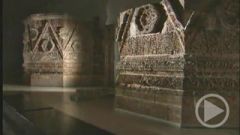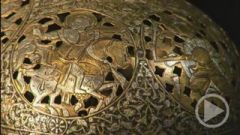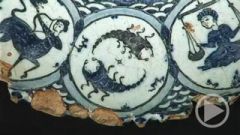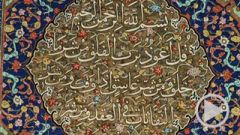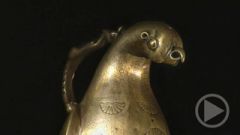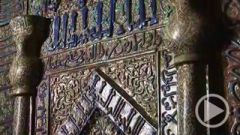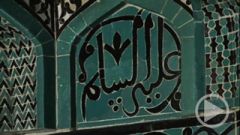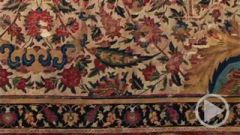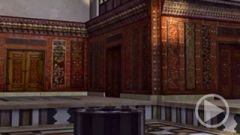- Home
- »
- Germany
- »
- Berlin
- »
- Museum Island
- »
- Pergamon Museum
- »
- The Museum of Islamic Art
- »
- The Pergamon Museum - Mosque Lamp
Mosque Lamp
Mosque Lamp
Allah is the Light of the heavens and the earth. The Parable of His Light is as if there were a Niche and within it a Lamp: the Lamp enclosed in Glass: the glass as it were a brilliant star.
Thus begins the Light Verse in surah 24 of the Quran – the surah called "al Nur" or The Light. It is the only chapter in the Quran where an allegory is used for God. The "lamp in the niche" is a recognisable symbol throughout the Islamic world. The faithful turn towards the prayer niche, and hundreds of hanging oil lamps shroud the mosque in a mystical shine. These hanging lamps were donated by wealthy citizens and rulers. This one was paid for in the 14th century by one of the great Mamluk sultans in Egypt.
In the mosque, the lamp would have hung from the ceiling on a chain. It would be half-filled with water and a pool of oil poured on top of that, with a wick floating in it. Burning from within, the lamp's brilliant colours would show to full advantage. The colours are enamel, burned onto heavy, dense glass. The Syrians had been using this technique since the time of the Poenicians, and bit by bit, it spread throughout the Islamic world.
Islam is not the only religion or culture in which God the creator brings light to the world. And what's true of the world, is true of the lamp: light brings it alive. Light transforms the inscriptions and makes the wonderful, coloured plant ornaments inside the lamp visible. In this way, the oil lamp becomes a symbol of god's power, which makes growth and flowering possible.
For Muslims, "light" also represents knowledge, which you should seek all your life, even if it would be necessary to travel very far, to China in the case of a related famous hadith.
Allah doth guide whom He will to His Light.


